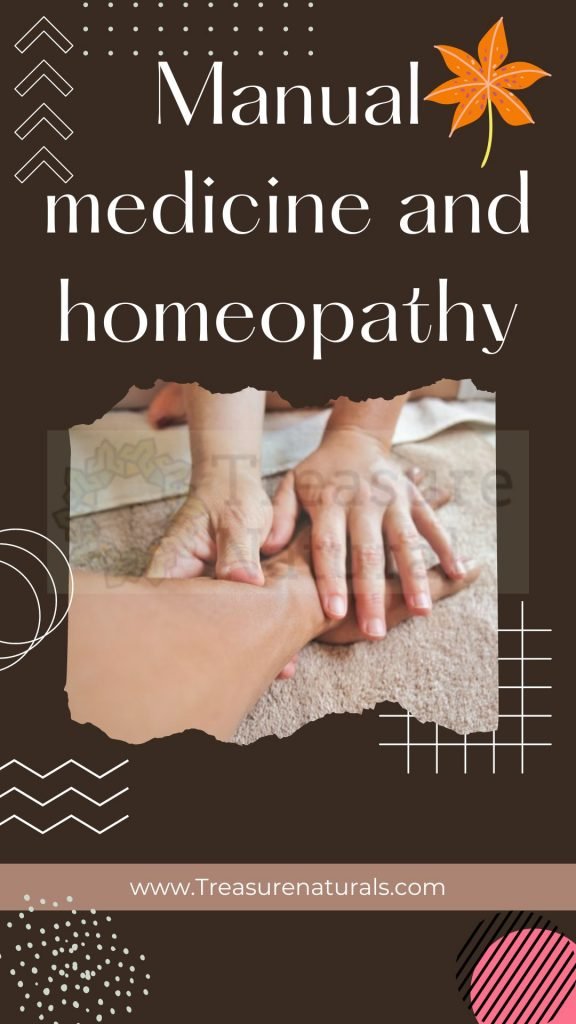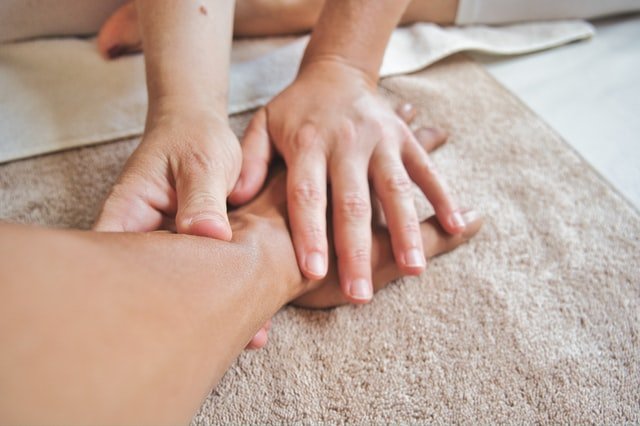
The doctor of Manual Medicine works mainly with the hands, going to stimulate certain points on the skin and connective tissues of the patient. The principles of the homeopathic method allow a personalization of therapy and great effectiveness in stimulating the vital force in the direction of healing.
By Manual Medicine we mean a diagnostic-therapeutic medical act that uses exclusively or mainly physical means consisting of the operator’s hands, possibly adjuvanted by simple tools that amplify its effectiveness.
The operator of M.M. is and must therefore be a doctor, who uses parameters belonging to Medicine, as regards anamnesis, clinic, diagnosis and consequent therapy.
Manual action is both diagnostic (as we will see) and therapeutic.
He works thanks to his own hands, but he can also use simple tools that amplify his use (and, of course, being a doctor, also drugs, which, however, will only have an adjuvant function of therapy).
Some basic principles of Homeopathy
It is commonly believed that Homeopathy is exhausted in the so-called Law of Likes, for which the medicine similar to the patient, or able to reproduce the pathological symptoms, has therapeutic virtue.
In reality, Homeopathy is basically a method that defines with some precision the tasks of the doctor and offers guidance, based on laws observable in Nature, aimed at healing.
Its elements are therefore numerous and varied and, as we will see, it does not necessarily need to resort solely to drugs. Let’s see, very briefly, some cornerstones.
1.Concept of disease: the patient always and only has a single disease, characterized by the set of its symptoms and manifestations, which individualize him. In practice, illness and the sick become an indivisible whole.
2. Definition of doctor: he is the one who has the will and ability to bring the sick person to healing.
3. Concept of healing: this, to be defined as such, must lead to the cessation of the totality of the patient’s pathological symptoms and this must also take place according to certain criteria, that is, in a rapid, sweet, lasting way and for obvious principles.
4. Principles of healing: the healing process must take place, as mentioned above, reasonably quickly, gently, once and for all and according to certain characteristics, which offer the doctor valuable elements of evaluation: the course of symptoms, particularly in chronic diseases, must take place from top to bottom, from inside to outside, from center to periphery. If all these criteria are met, the doctor will know that his patient is proceeding in the right direction, and his recovery will be stable over time.
5. Law of The Like:that which has the power to reproduce, with external intervention, as similarly as possible, the set of symptoms manifested by the patient also has healing power. This is the fundamental principle of this therapeutic method aimed at healing, which is enclosed in the very term homeopathy: similar pathology.
6. Tasks of the doctor: he must observe the patient well, listen to him carefully, discover any causal links of his pathological manifestations and remedy them promptly, detect all his manifestations and symptoms without giving preconceived interpretations, “hierarchize” and characterize the above and place it in relation to the basic characteristics of the patient, such as physiology of his main functions, temperament, the environment in which he lives, his eating habits, the type of work, etc. After this necessary first phase of knowledge, he will have to carry out a synthesis that will allow him to relate him to the most convenient and personalized therapy possible.
7. Personalization of therapy: the therapy will be successful if this is directed to the person and not to his symptoms or to the alleged pathology that the patient manifests. The “classic” homeopath will have to identify the simillimum drug, that is, that responds as best as possible to the Law of Similars. The doctor of Manual Medicine, who acts in accordance with the principles of Homeopathy, must be able, by treating specific points of the body, to reproduce its manifestations and symptoms.
8. Reaction to therapy: a good prognostic sign, in addition to the course of the symptoms that we have seen in point 4, is a particular reaction of the patient that occurs immediately after or in the days immediately following the administration of the therapy. It is referred to as Homeopathic Aggravation, as with greater intensity (Aggravation) the patient manifests symptoms similar to his original disease (Homeopathic). Everything must obviously take place in a short time and prelude to a subsequent improvement of the general condition of the person.
Why “Manual Homeopathy”?

Quite simply because using the manual approach we are able to satisfy all those homeopathic principles indicated in the previous chapter.
That is, with the tool of our hands we are able to bring to the rapid, sweet and lasting healing of the patient.
With the help of healing principles we can observe and understand the direction the patient is taking and take appropriate action.
The Law of Similars is also satisfied: the doctor of Manual Medicine, who acts in accordance with the principles of Homeopathy, knows that the prognosis of healing is closely related to his ability, during therapy, to reproduce, in as similar a way as possible and a little more intensely, the symptomatology complained of by the patient.
The approach of knowledge in observation, listening, interrogation and subsequent manual verification, goes to investigate, free from prejudices, what the patient expresses, with all the details and particularities. Using his own hands, the doctor will have an extra tool of knowledge that normally the “classic” homeopath neglects to use, for the simple reason that he does not possess the cultural tools. The hands, in fact, have the ability to discover things that simple observation and listening does not allow you to grasp.
Manual medical therapy is always personalized and must be conducted under the strict guidance of the patient himself (more personalized than that!).
Immediate reactions are normally observed, with rapid and fleeting aggravation of local symptoms and reproduction of various symptoms, including emotional ones, always characteristic of the patient.
Reactions of the next day are frequently observed, which can last from a few hours to a few days and which, from common experience, these also constitute a good prognosis.
In conclusion, this highly sophisticated tool made up of human hands allows you to “see”, diagnose, often understand and have in themselves, if well used, directly therapeutic function. With this you do not want to deny the drug in Homeopathy, which is and will remain a powerful tool of healing. Simply the doctor is provided with an extra tool, which is at least as useful and which does not prevent the subsequent or simultaneous use of the homeopathic medicine.
What we want to do here for now to understand is that:
- the doctor of Manual Medicine has the opportunity to bring his patient to healing if he adopts the principles of Homeopathy;
- the already Homeopathic doctor, if he uses certain principles and criteria of manual medicine, will have in addition a diagnostic and therapeutic tool of at least equal power to the pharmacological one.
By Manual Homeopathy we therefore mean Manual Medicine that consciously adopts the principles of Homeopathy






